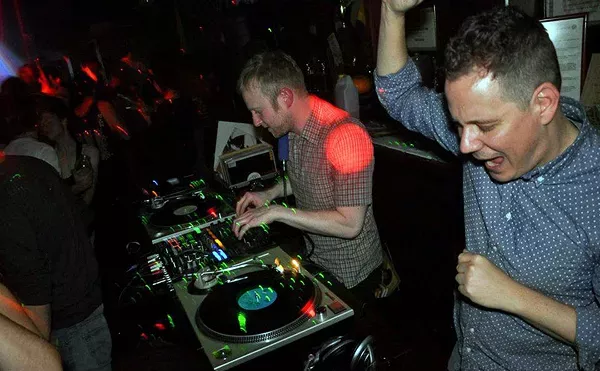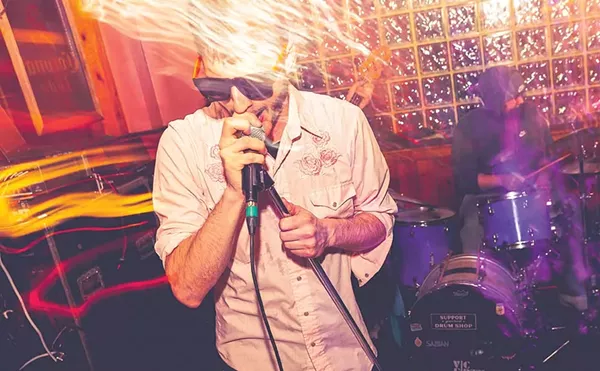Roberta Sanders has been with Community Mental Health Services in Detroit for 22 years. Over those years, cases like that of Roy Brooks have become all too familiar to her. Prisons, not mental health centers, have increasingly become society’s parking garage for people who suffer from severe mental illnesses such as bipolar disorder and lack both insurance and strong family support.
She says the problem started with the rise of the mental health community’s de-institutionalization movement. The idea of “community control” sounded good as it caught on in the late 1960s, spurred by the civil rights movement and by President Kennedy’s earlier support for legislation pushing community-based mental health facilities. With new drugs that could dependably stabilize many disturbed people, de-institutionalization hit full stride in the late 1970s. Thousands of people who had been in residential care for years were released, sometimes to uncertain circumstances.
“Somewhere between all those good intentions it was sold to state legislatures as a way to save money,” Sanders says. “But all of those do-gooders, and I include myself, were not talking about saving money. It was about more humane treatment, given closer to home. But as often happens, an idea gets bastardized and glommed onto for a lot of the wrong reasons.”
So, she says, important questions such as community clinic capacity, housing and coordination with the criminal justice system were ignored in the rush. As the de-institutionalization accelerated in Michigan, major residential care centers such as the Ypsilanti State Forensic Hospital, Lafayette Clinic and Detroit Psychiatric Institute closed; the number of beds for residential treatment — the kind of treatment Brooks needs — fell.
“I don’t think any of us ever thought everybody should be de-institutionalized,” she says, “just those who it would work for. But as it became more about saving money, it was applied to everybody.”
She says the process has destroyed the institutional memory and research capacity of once-premier institutions and has left the community with fewer places for people needing long-term, inpatient care.
“Getting patients into long-term care takes a lot of doing,” she says. “More often than not you will not get in.”
Dr. Silas Norman, who capped a 15-year career with the Michigan Department of Corrections as its medical director from 1997 through 1999, says this is one important reason why prison populations have soared.
“The closures of those institutions and the significant increase in prison populations are directly related,” he says. “When I started there in 1985, there were about 19,000 prisoners and now there are 46,000. That is a trend in the entire country, but so is the trend to dismantle inpatient psychiatric systems.”
A recent story in the Washington Post supports Norman. It says that, nationally, there are now nearly five times more mentally ill people in prison than in state mental hospitals. And while serious mental illness afflicts 5.4 percent of this country’s adults, it affects nearly 16 percent of all inmates.
“It costs about $30,000 to keep someone in prison for a year,” says Norman, who is now in charge of outpatient clinics for Wayne State University’s department of medicine. “If we were to spend that money on mental health care and education, we could send them to an Ivy League school, we could take care of their health more cheaply. We are talking about a $200 million-plus budget for mental health care in the state prisons. If we put that elsewhere, there would be a significant number of people who would not be in prison.”
Instead, he says, “we’ve populated the prisons with individuals who ought to be in psychiatric hospitals. In a sense it works, because it keeps them outside of society. The trouble really starts when they are released and they don’t have a place to go.”
Norman also says he’s troubled by the Michigan Department of Corrections claim that, over the last decade, only 5 percent to 6 percent of its inmates require mental health care — one-third the national average.
“You either have to assume that Michigan prisoners are less mentally ill than the rest of the country or that we are not identifying the patients,” he says. “These individuals are cycling in and out of the civilian community, so if we are not treating those who are among the more violent and less predictable, the community is not getting the safety that it is demanding.”
“It is not a very good system,” agrees Willie Scott, director of the Third Circuit Court Psychiatric Unit for 17 years. “The state says community control is the best way to provide these services, with facilities in the community that don’t need to be run by the state, which is why they’ve closed so many of their own. So the state provides the money to the communities for the treatment, but there is a real question whether they are getting enough.”
The problem may be getting worse. Last month the Detroit Medical Center announced the elimination of 70 beds for psychiatric patients at Harper, Sinai-Grace and Detroit Receiving hospitals. Hospital executives said the closing of the DMC’s services for indigent mental patients was due to a $100 million cut in its share of the Michigan Department of Community Health budget.

More on Roy Brooks:
Music, madness & Marquette prison
On record & on-line






